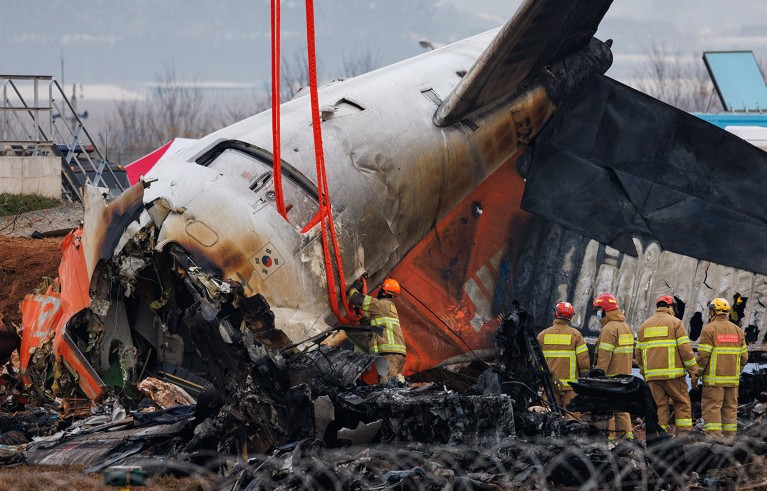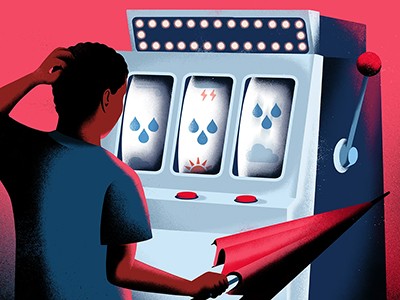The Art of Uncertainty: How to Navigate Chance, Ignorance, Risk and Luck David Spiegelhalter Pelican (2024)
As I sat down to read David Spiegelhalter’s The Art of Uncertainty, much of the world’s focus was on the 2024 US presidential elections. Forecasts flooded news outlets and social media, saying that the race was too close to call. When the results came out — a resounding win for Donald Trump — they laid bare the limitations of predictive models, which are subject to assumptions, uncertainty and shifts in voter behaviour. It was ideal timing, it turned out, for reading a book that emphasizes the importance of humility when dealing with uncertainty and predictions.
Why probability probably doesn’t exist (but it is useful to act like it does)
Spiegelhalter, a renowned statistician, has crafted a masterful examination of how to understand, measure and communicate uncertainty. His great ability to translate complex statistical concepts into accessible language is fully on display. Drawing from decades of experience, he neatly weaves together historical anecdotes, real-world examples and rigorous statistical analyses to provide a comprehensive overview.
This book asks how we can use data and statistical analysis to make informed decisions in the face of uncertainty. It equips readers with the tools to think critically about risk and chance, enabling them to make better choices in their lives. Spiegelhalter exposes the limitations of intuitive reasoning about uncertainty, advocating replacing gut feelings with evidence-based analysis. He encourages readers to question their assumptions and demonstrates how even seemingly straightforward questions can have surprisingly complex answers.
Uncertainty is personal
Spiegelhalter opens by highlighting how the interplay between chance, ignorance, risk and luck can shape our lives in unexpected ways. His explanation reminds me of an ancient Chinese parable of the old man who lost his horse. In this story, an elderly farmer’s horse runs away, prompting villagers to express sympathy for his bad fortune. The old man responds, “How do you know this is bad luck?” Soon after, the horse returns with a wild horse, leading villagers to congratulate him on his good fortune. Again, he asks, “How do you know this is good luck?” The cycle continues, as seemingly good and bad events unfold, each challenging assumptions about fortune and misfortune.

Flash floods such as this in Spain last year will become more frequent with climate change.Credit: Davide Bonaldo/SOPA Images/LightRocket/Getty
Uncertainty is thus not an intrinsic property of events, Spiegelhalter writes, but rather a reflection of the knowledge, perspective and assumptions of the person trying to understand or predict those events. It varies from person to person and situation to situation, even when the circumstances are identical. It is subjective and shaped by what we know or don’t know at a given time.
Spiegelhalter distinguishes two main types of uncertainty: aleatory uncertainty, that which we cannot know, and epistemic uncertainty, that which we do not know. Understanding this distinction is crucial for making informed decisions. Whereas aleatory uncertainty is often irreducible, epistemic uncertainty can be minimized through better data collection, refined models or deeper investigation.
Prediction needs humility
A central theme woven throughout Spiegelhalter’s book is the importance of humility in prediction. In an age in which scientists often feel pressured to project certainty, and the world clamours for it, his call for acknowledging the limits of our knowledge is refreshing and necessary. Through compelling examples, from economic forecasts to climate models, he demonstrates how even our most sophisticated statistical tools rest on assumptions that can prove fragile.

A plane crash in South Korea last December.Credit: Seongjoon Cho/Bloomberg/Getty
Emphasizing that “all models are wrong, but some are useful”, he advocates transparency about model assumptions and limitations. Acknowledging uncertainty enhances rather than diminishes credibility and public trust, he writes. It enables more-informed and nuanced choices and leads to better outcomes.
He also introduces us to ‘deep uncertainty’ topics, such as what artificial intelligence might look like 25 years from now, of which we can’t even list all possible outcomes, let alone assign them probabilities. This honest recognition of our fundamental ignorance stands in sharp contrast to the false certainties that are often projected in public discourse.



